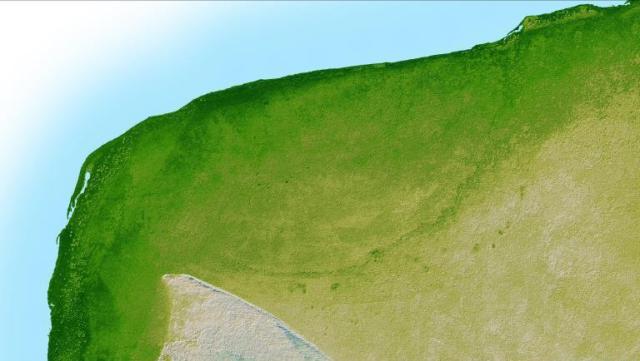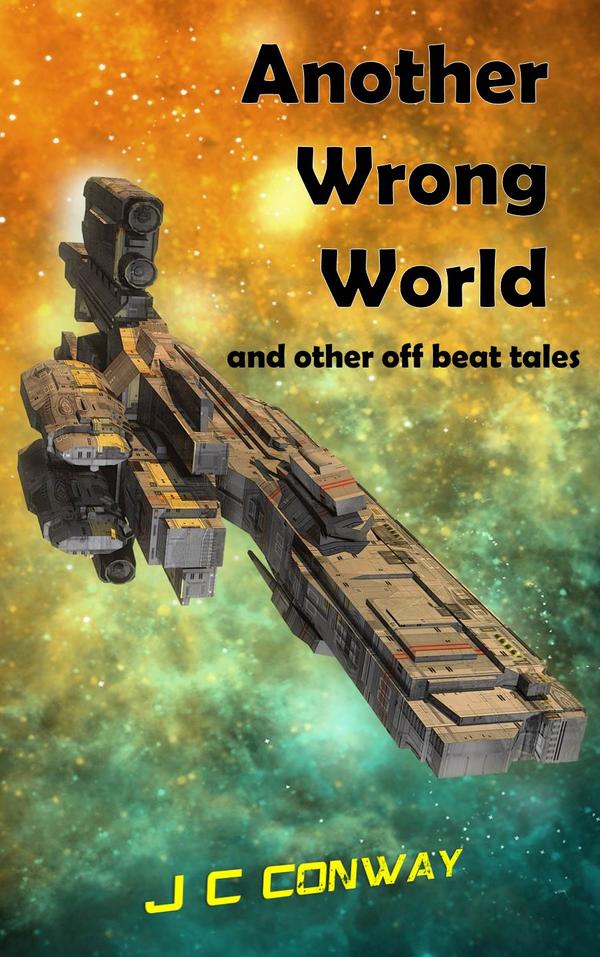
On the topic if extinction level events, the one that comes most often to mind is the risk of an asteroid or comet hitting Earth. There is plenty of evidence that collisions occur. The Moon’s surface is full of impact craters. There are some well known craters on Earth, although Earth’s active surface covers most of its craters. (See the Earth Impact Database for an accounting of known impact craters.) Nevertheless, big hits occur from time to time, and it appears they are responsible for up to three of the five major extinction events in Earth’s history, the most recent being the Cretaceous–Paleogene extinction event about 66 million years ago, wiping out most of the dinosaurs, among other species. The crater from that impact is thought to be the Chicxulub crater buried under the Yucatán Peninsula in Mexico.
At this time, we are probably not much better prepared than the dinosaurs to deal with a large celestial object on a collision course with Earth. In the recent report Future Global Shocks: Improving Risk Governance, by the Organisation for Economic Co-operation and Development (“OECD”), sponsored by Oliver Wyman’s Global Risk Center, the OECD acknowledges, in a somewhat understated way, humanity’s present inability to cope with a large impact:
While a large asteroid collision with the earth could certainly cause a global shock, the public policy options to address this threat are somewhat restricted.
The report, logically, addresses future global shocks that actually can be addressed (pandemics, financial crises, etc.)
Fortunately, humanity is very creative. We have developed adequate technology to have eyes and ears in the solar system tracking objects left, right, up and down. A good place to gather information about the many near-Earth objects being tracked is the Minor Planet Center, where data about known asteroids and other objects are recorded with trajectories and estimates of how close they will come to Earth. We’re still working on what can be done if some giant rock makes an appearance on an intercept course, but with a rapidly increasing knowledge of physics and gravity, one would hope we will be ready when the time comes (which, playing the odds, might well be centuries or eons in the future).
 In the meantime, the risk of a celestial collision has been great fruit for fiction. Two blockbusters released in 1998, Deep Impact starring Robert Duvall, Téa Leoni, Elijah Wood and Morgan Freeman as the U.S. President, and
In the meantime, the risk of a celestial collision has been great fruit for fiction. Two blockbusters released in 1998, Deep Impact starring Robert Duvall, Téa Leoni, Elijah Wood and Morgan Freeman as the U.S. President, and  Armageddon starring Bruce Willis, Billy Bob Thornton, Ben Affleck, among others, both posited an imminent strike as the instigating event. One was a comet, the other was an asteroid. In both cases an attempt was made with space ships delivering nuclear bombs to reduce or eliminate the threat. Those films are almost 20 years old now, so we should be due for another impact disaster movie sometime soon.
Armageddon starring Bruce Willis, Billy Bob Thornton, Ben Affleck, among others, both posited an imminent strike as the instigating event. One was a comet, the other was an asteroid. In both cases an attempt was made with space ships delivering nuclear bombs to reduce or eliminate the threat. Those films are almost 20 years old now, so we should be due for another impact disaster movie sometime soon.
The theme appears in novels as well. The Edgar Award winning Last Policeman Series by Ben H. Winters, for instance, is set against the imminent collision of an asteroid with Earth. The story begins 6 months before the anticipated calamity. Also, the Hugo Award nominated Lucifer’s Hammer by Larry Niven and Jerry Pournelle tells the story of a comet strike, which ends civilization as we know it, and the struggle of those who survive.
NASA and other space agencies are studying the problem of fast-moving, high-mass loose celestial objects and what it takes to alter their course. It is estimated that impacts from objects the size of the Chicxulub impactor (about six miles in diameter) occur about once every 100 million years. If it occurred like clockwork, that would be good. It would give us about 34 million years to solve the problem. As it is, the estimate is only an average, so we might have less or more than 34 million years to prepare. So, given that homo sapiens is estimated to have been around for only about a half million years, and the progress humanity has made in science, physics and technology to date, it’s at least somewhat comforting to know that the problem is already under scrutiny.

Image Credit: JPL – A shaded relief image of the northwest corner of Mexico’s Yucatan Peninsula generated from Shuttle Radar Topography Mission data, showing a subtle, but unmistakable, indication of the Chicxulub impact crater. The pattern of the crater’s rim is marked by a trough, the darker green semicircular line near the center of the picture.









